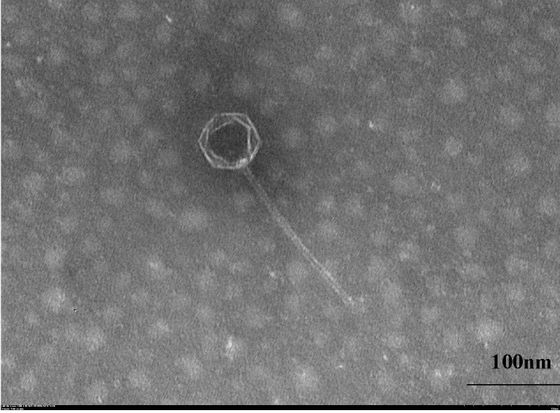A new type of deep-sea virus is discovered at a depth of about 9,000 meters, and scientists say it is the ``deepest bacteriophage ever isolated''

It has been reported that 'vB_HmeY_H4907,' a new species of virus in
Identification and genomic analysis of temperate Halomonas bacteriophage vB_HmeY_H4907 from the surface sediment of the Mariana Trench at a depth of 8,900 m | Microbiology Spectrum
https://journals.asm.org/doi/10.1128/spectrum.01912-23
A newly identified virus emerges from the dee | EurekAlert!
https://www.eurekalert.org/news-releases/1001896
Scientists in China find mysterious virus at the bottom of the Mariana Trench | Live Science
https://www.livescience.com/planet-earth/scientists-in-china-find-mysterious-virus-at-the-bottom-of-the-mariana-trench
This time, an international research group led by Wang Ming of Ocean University of China succeeded in discovering a new type of virus. A research group investigating the ecology of microorganisms in extreme environments such as the polar regions and the deep sea was cultivating Halomonas bacteria isolated from sediment at a depth of approximately 8,900 meters in the Mariana Trench in the western Pacific Ocean. It was determined that the bacteria were infected by bacteriophages .

Bacteriophage is a virus that parasitizes bacteria and multiplies, and is known to cause a phenomenon called
The research group analyzed the genome of a bacteriophage named ``vB_HmeY_H4907,'' and found that it is a new type of virus with parts similar to another siphovirus that infects Halomonas bacteria.
``vB_HmeY_H4907'' found in the deep sea has a shape consisting of a regular icosahedral head and a long tail, like a robot or spaceship.

Recent research has revealed that the deepest region of the ocean, called
The research group stated that 'vB_HmeY_H4907' is a siphovirus isolated from the deepest part of the ocean. In addition, since genome analysis has shown that it belongs to a different lineage from those found so far, we have also proposed a new virus family, ``Suviridae.''
The new virus, vB_HmeY_H4907, is a lysogenic phage that invades host bacteria and replicates itself, but normally does not kill bacterial cells and copies the virus' genetic material as the cells divide. It is said that it will be passed down to descendants. It is thought that this property allows them to multiply without killing their hosts in the harsh environment of the deep sea.

In the future, the research group aims to discover more deep-sea viruses and clarify the molecular mechanisms by which they interact with their hosts. 'This research will contribute to expanding our understanding of the virosphere, the region on Earth where viruses exist,' said Wang. 'Extreme environments are the perfect place to discover new viruses. That's why,' he said.
Related Posts:
in Science, Posted by log1l_ks







